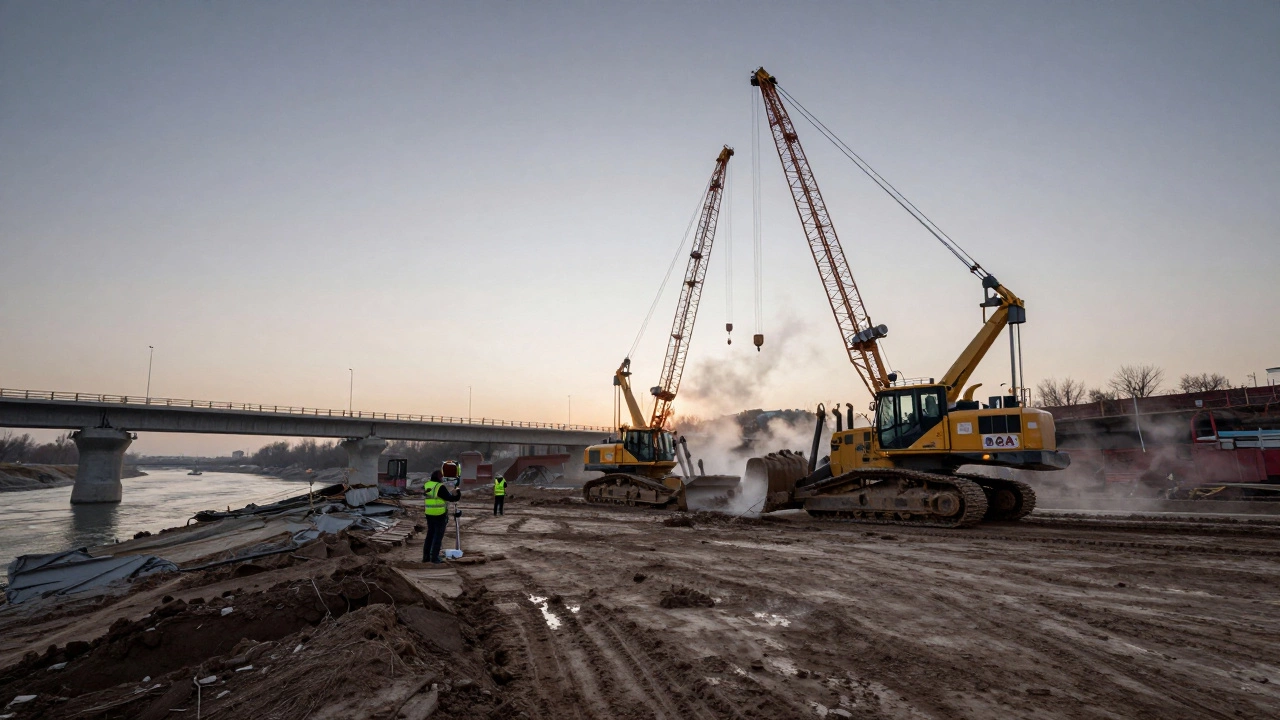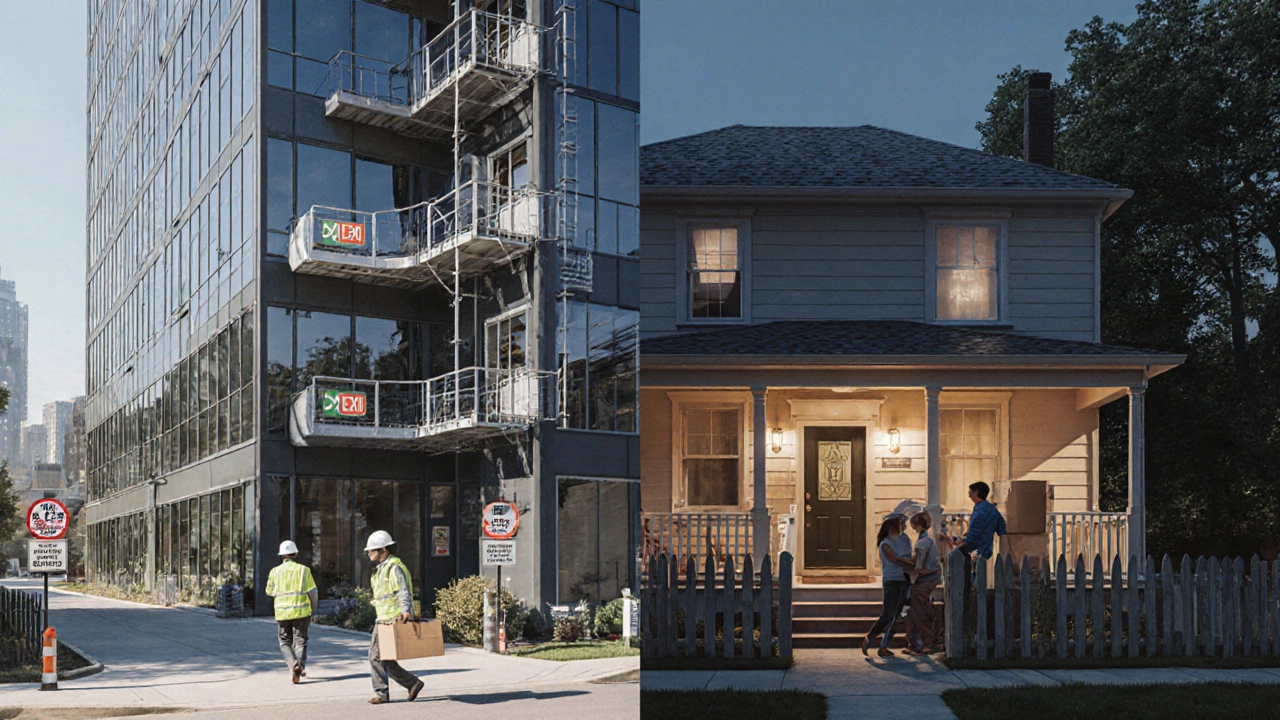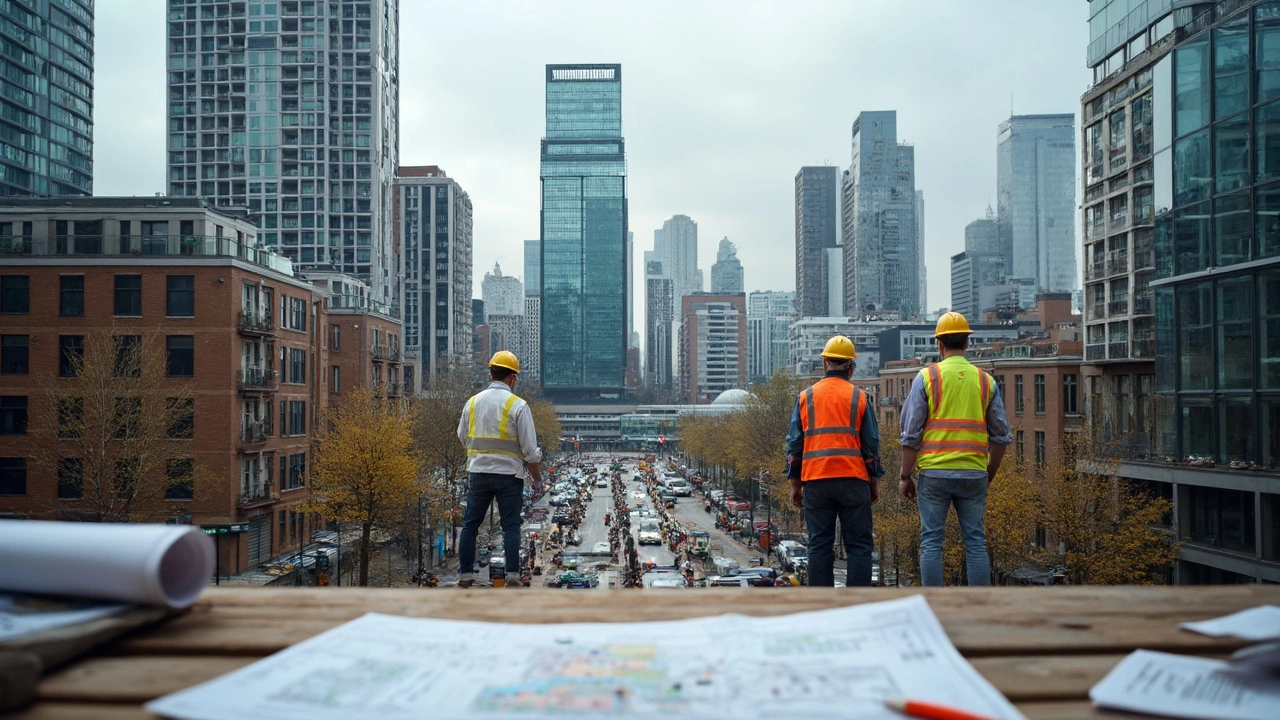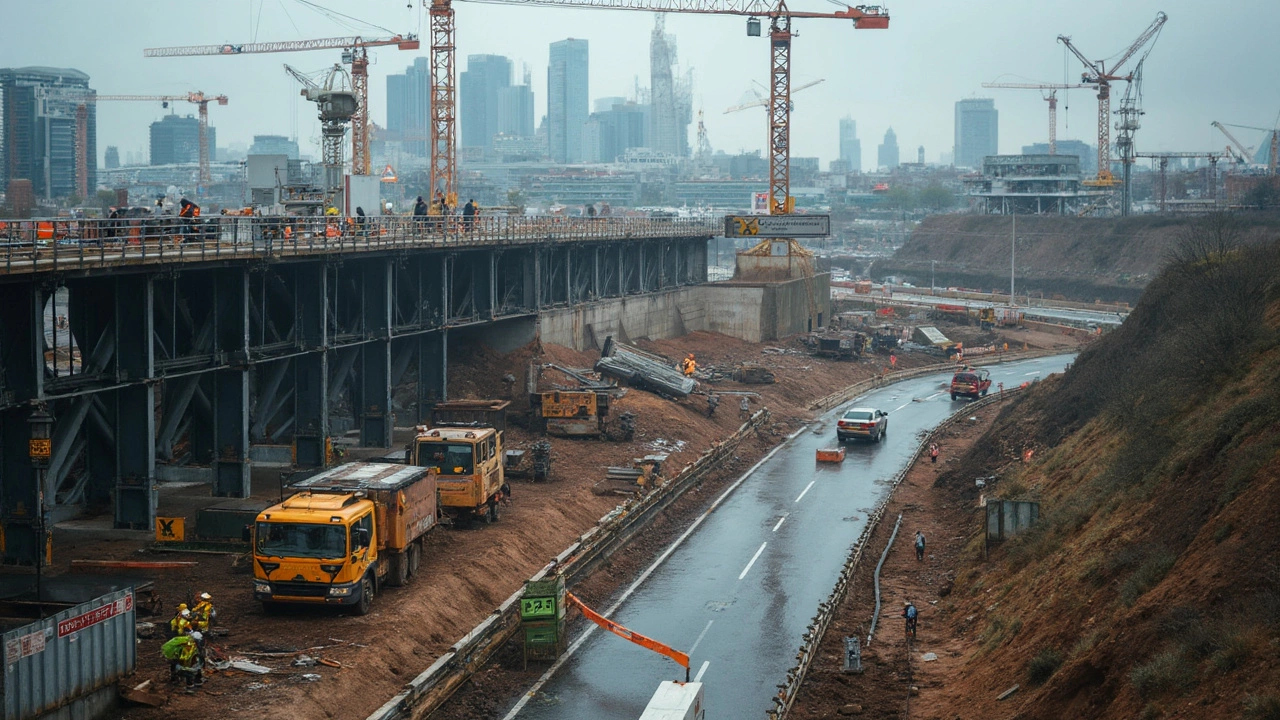Commercial Construction: What You Need to Know Today
If you're thinking about a commercial build, you probably wonder how it differs from a house renovation and what makes it profitable. The short answer is that commercial projects involve bigger budgets, stricter regulations, and a focus on long‑term durability. In the UK, commercial construction covers offices, retail spaces, warehouses, and more. Knowing the basics helps you avoid costly mistakes and keep the project on track.
First, set a realistic budget early on. Recent industry data shows the average profit margin for UK construction firms hovers around 5‑7 %. That means you need to plan for both direct costs—materials, labour, equipment—and indirect costs like permits, insurance, and design fees. A clear budget lets you compare quotes and spot hidden fees before they hit your balance sheet.
Key Steps for a Smooth Commercial Build
Start with a solid brief. Write down the building’s purpose, size, required certifications, and any sustainability targets. A detailed brief saves time when you meet architects and engineers, because everyone knows what you expect.
Next, choose the right construction materials. Concrete, steel, and engineered wood each have strengths. Concrete offers fire resistance and stability; steel provides speed and flexibility; engineered wood can lower costs while meeting design goals. Pick based on budget, load requirements, and the project timeline.
Don’t overlook planning permission. Commercial sites often need more detailed assessments than residential ones, especially regarding access, parking, and environmental impact. Working with an architect who understands local regulations speeds up approvals and keeps the project moving.
Profit Tips and Industry Trends
Staying on top of industry trends can boost your bottom line. In 2025, engineered hardwood and luxury vinyl plank are dominating commercial flooring because they combine durability with a modern look. Using these materials can reduce maintenance costs and attract tenants faster.
Another trend is the rise of modular construction. Prefabricated modules are built off‑site and assembled quickly, cutting labour time and waste. This method can improve your profit margin by up to 10 % on larger projects.
Finally, monitor the profit margin closely. A recent analysis of UK construction firms shows that firms that track actual costs versus estimates in real time achieve higher profitability. Simple software tools can flag overruns early, letting you adjust scope or negotiate with suppliers before the budget spirals.
Commercial construction is a big undertaking, but breaking it down into clear steps makes it manageable. Define your brief, pick the right materials, secure permits early, and keep an eye on cash flow. By following these practical tips, you’ll nail the project and keep the profit margin healthy.
What Is the Difference Between Civil and Commercial Construction?
- Gavin Whitaker
- |
- |
- 0
Civil construction builds infrastructure like roads and bridges, while commercial construction creates buildings for business use like offices and stores. Learn how their goals, regulations, timelines, and teams differ.
View moreWhat Makes a Building Commercial? Key Features That Define Commercial Properties
- Gavin Whitaker
- |
- |
- 0
A building becomes commercial not by how it looks, but by how it's used - for profit-driven activities like retail, offices, or hospitality. Zoning, building codes, and insurance all change when a space crosses from residential to commercial use.
View moreCommercial vs Residential Construction: Which Is Better for Your Project?
- Gavin Whitaker
- |
- |
- 0
Commercial and residential construction serve very different purposes. Learn the key differences in cost, timeline, financing, and risk to decide which type of building is better for your goals.
View moreWhat Is Type 5 Building Construction? Understanding Wood-Framed Structures in Commercial Use
- Gavin Whitaker
- |
- |
- 0
Type 5 building construction uses wood framing for small commercial buildings like retail stores and clinics. Learn how it works, where it's allowed, fire safety rules, and what to check before leasing or buying.
View moreIndustrial and Commercial Construction: Are They Really the Same?
- Gavin Whitaker
- |
- |
- 0
Ever wondered if industrial and commercial construction are just two names for the same thing? This article digs into what actually separates these two huge pieces of the construction world. You'll find out how their projects, needs, and even teams can be very different. Plus, there are helpful tips for anyone thinking about a new building or trying to pick the right contractor. Get ready for some real talk that clears up the confusion.
View moreCommercial vs Non-Commercial: What Sets Them Apart in Construction?
- Gavin Whitaker
- |
- |
- 0
This article breaks down the real differences between commercial and non-commercial buildings in the world of construction. You'll find out what makes a project count as commercial, how regulations and codes change based on the type, and why these differences matter for contractors and owners. We've included facts about zoning, permits, and costs, along with tips for handling the main challenges on each side. Let’s clear up the gray areas and make sense of where your project lands.
View moreCommercial Structure Types: What Construction Means for Your Business
- Gavin Whitaker
- |
- |
- 0
Choosing the type of construction for a commercial structure is more than just picking out materials—it's about meeting safety codes, insurance guidelines, and long-term cost concerns. This article breaks down commercial construction types, from steel to wood frames and beyond. You'll see why the materials and methods matter for everything from fire safety to how much you pay for coverage. Find out how to tell what type your building is—and what that means for your next project.
View moreHeavy Civil: What Really Counts in Commercial Construction
- Gavin Whitaker
- |
- |
- 0
Wondering what 'heavy civil' means in construction? This article breaks down exactly which projects qualify, like highways, bridges, and water treatment plants—plus why it matters for bidding, safety, and costs. Get practical tips to spot heavy civil work on job sites and learn why these projects have their own rules and challenges. Find out what sets them apart from regular commercial buildings, using plain and clear language. Anyone in the construction field or just plain curious will understand what’s really behind the term 'heavy civil.'
View moreWhat Is Classified as Commercial? Commercial Construction Explained
- Gavin Whitaker
- |
- |
- 0
This article breaks down what counts as commercial in the construction industry. It highlights the types of properties classified as commercial, the rules that shape these buildings, and how they differ from residential spaces. You'll also get tips about zoning, building codes, and placement of mixed-use properties. With straightforward examples and practical advice, you'll know exactly where the commercial line is drawn.
View moreCommercial Construction: What's Covered?
- Gavin Whitaker
- |
- |
- 0
Commercial construction projects are complex, involving many moving parts. Understanding what is covered under commercial insurance is crucial for construction projects to avoid facing unexpected risks and financial setbacks. This guide explores the essential elements of commercial construction coverage, explaining necessary insurance, common exclusions, and risk management tips.
View moreUnderstanding the 3 4 5 Method in Commercial Construction
- Gavin Whitaker
- |
- |
- 0
The 3 4 5 method is a simple yet effective technique used in commercial construction to ensure right angles in building projects. By applying the Pythagorean theorem in a practical way, this method helps builders create perfectly squared corners, which is essential for structural integrity. This article explains how the method works, its benefits, and handy tips for applying it on-site. With a clear understanding of the process, builders can enhance both the quality and precision of their construction projects.
View moreWhat Type of Construction Dominates Commercial Buildings?
- Gavin Whitaker
- |
- |
- 0
Ever wondered what kind of construction methods stand behind the towering buildings in our cities? Discover the most common types of constructions used for commercial buildings, from towering skyscrapers to sprawling shopping centers. Understand the materials, techniques, and architectural styles that mold our urban landscapes. If you're curious about what makes commercial buildings stand tall and sturdy, this is your guide.
View more










